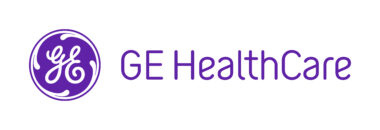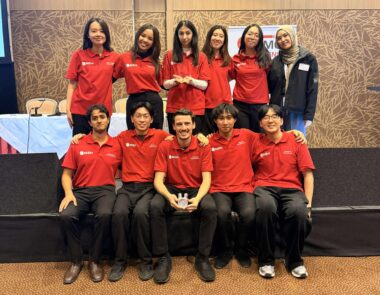2 September 2024: This national Women’s Health Week (2- 9 September), Melbourne mum, Kate, joins women’s health experts and international community organisations to raise awareness about lesser-known treatment options for adenomyosis and other women’s health conditions, empowering women to make informed, personalised health decisions.
Although a hysterectomy may be suitable for some patients with adenomyosis, data from the Australian Commission on Safety and Quality in Healthcare reveals that the rate of this procedure is higher in Australia when compared to most other Organisation for Economic Co-operation and Development (OECD) countries.4
If alternative options are not explored, it can leave women, like Kate, feeling powerless, especially if the treatment does not align with their individual health needs.
“Incontinency, prolapse, these are just a few of the risks I would be facing. Someone has to be in the percentage where things don't go well- and I didn't want that to be me. But I felt like I was running out of options,” Kate explained.
Uterine artery embolisation (UAE) is one example of an alternative, minimally invasive interventional radiology (IR) procedure performed by an interventional radiologist using image guidance techniques. UAE can help address adenomyosis symptoms while offering shorter recovery times, reduced in-hospital stays, easing the burden on the healthcare system while improving patient outcomes and experience.5,6,7
Professor Warren Clements, Interventional Radiologist and representative of the Interventional Radiology Society of Australasia (IRSA), acknowledges the ongoing developments in women’s health and the vital role of community organisations in driving improved patient outcomes.
“It's exciting to see an uptick in research trials and clinical workshops in the field of women’s health. These efforts are helping to expand the applicability of minimally invasive treatment options, like UAE, for other common conditions like endometriosis,” he notes.
“At IRSA, this is at the core of our mission- to empower all Australians with greater choices that can better align with their individual health needs,” said Dr Clements.
Jess Taylor, CEO of QENDO, a non-profit organisation that advocates for those affected by endometriosis, adenomyosis and other pelvic health related conditions across Australia and New Zealand, reinforces the importance empowering all women with the knowledge to make informed health decisions. As someone who also lives with adenomyosis, Jess calls for Australians to consider building their toolbox to manage these really complex conditions
“Endometriosis and adenomyosis are not new conditions, but they are newly spoken about,” Jess said.
“At QENDO, we believe in supporting individuals, and their ‘toolbox’ of resources, healthcare professionals, and treatments that align with their values. It’s great to see organisations like IRSA advocating for greater awareness and education for people to learn about, become informed of the lesser-known and minimally invasive options that are available,when considering their individualised care,” said Jess.
Spokespeople
We can help line up interviews with:
-
Kate (43), a Melbourne-based mum, who found relief from her adenomyosis through UAE.
-
Professor Warren Clements, Melbourne-based Interventional Radiologist, with a special interest in women’s health, spokesperson of IRSA.
-
Jess Taylor, CEO of QENDO, a not-for-profit organisation that advocates for people living with endometriosis, adenomyosis and other pelvic health conditions across Australia and New Zealand.
-
Queensland based Interventional Radiologists with a special interest in women’s health who can also provide a local case study
Our spokespeople are available to speak to the following points:
-
What is adenomyosis and endometriorsis?
-
What is uterine artery embolisation and how can it benefit eligible patients?
-
Why is it important for women to be aware of alternative treatment options such as UAE?
-
Advice for women who are diagnosed with adenomyosis and/or endometriosis
-
Where can Australians go to find out more?
References
-
QENDO. (n.d.). Introducing Adenomyosis. Retrieved August 28, 2024, from https://www.qendo.org.au/blog/introducing-adenomyosis?rq=adenomyosis
-
Jean Hailes for Women's Health. (n.d.). Adenomyosis. Retrieved August 28, 2024, from https://www.jeanhailes.org.au/health-a-z/ovaries-uterus/adenomyosis
-
Northwell Health, n.d. Women have been overlooked in medical research for years. Available at: https://www.northwell.edu/katz-institute-for-womens-health/articles/women-overlooked-in-medical- research [Accessed March 2024]
-
Australian Commission on Safety and Quality in Healthcare, n.d. The Second Australian Atlas of Healthcare Variation. Available at: https://www.safetyandquality.gov.au/sites/default/files/migrated/3.1- Hysterectomy.pdf [Accessed March 2024]
-
Makris, G.C., Butt, S. and Sabharwal, T., 2020. Unnecessary hysterectomies and our role as interventional radiology community. CVIR Endovascular, 3(1). https://doi.org/10.1186/s42155-020-00138-x
-
Clements, W., 2020. Uterine fibroid embolisation: advocating women’s choice for uterine salvage. CVIR Endovascular, 3(78). https://doi.org/10.1186/s42155-020-00161-y
-
The Royal Australian and New Zealand College of Radiologists, n.d. Stakeholder Consultation Paper: Recognising Interventional Radiology as a field of specialty practice within Radiology in Australia. Available at: https://www.ranzcr.com/college/document-library/briefing-paper-interventional-radiology?searchword=Stakeholder%20Consultation%20Paper:%20Recognising%20Interventional%20Radiology%20as%20a%20field%20of%20specialty%20practice%20within%20Radiology%20in%20Australia.%20&indexedsearch[sorting]=score:desc [Accessed August 2024]
Key Facts:
-
About one in five women are affected by adenomyosis, a condition where the endometrium grows into the muscle of the uterus, causing heavy, painful periods and sometimes, referred pain to the back and down the legs.1,2
-
Evidence suggests that in Australia, hysterectomy, a surgical treatment which involves the removal of the uterus, may be overused for the treatment of noncancer conditions, such as adenomyosis.4
-
Uterine artery embolisation (UAE), is a transformative, minimally invasive option that can offer relief from the debilitating symptoms of adenomyosis by using a small tube inserted through the artery to reduce blood flow to problematic uterine tissue, allowing for quicker recovery and fewer complications.5,6
-
Empowering women and people living with adenomyosis with knowledge and access to alternative treatments options is crucial in ensuring all Australians can choose the most suitable and individualised care options for their unique health needs.6
Contact details:
Kerry Jung – 0435 753 618/ [email protected]
Maitreyi Kulkarni – 0413 712 977/ maitreyi@palin.com.au


